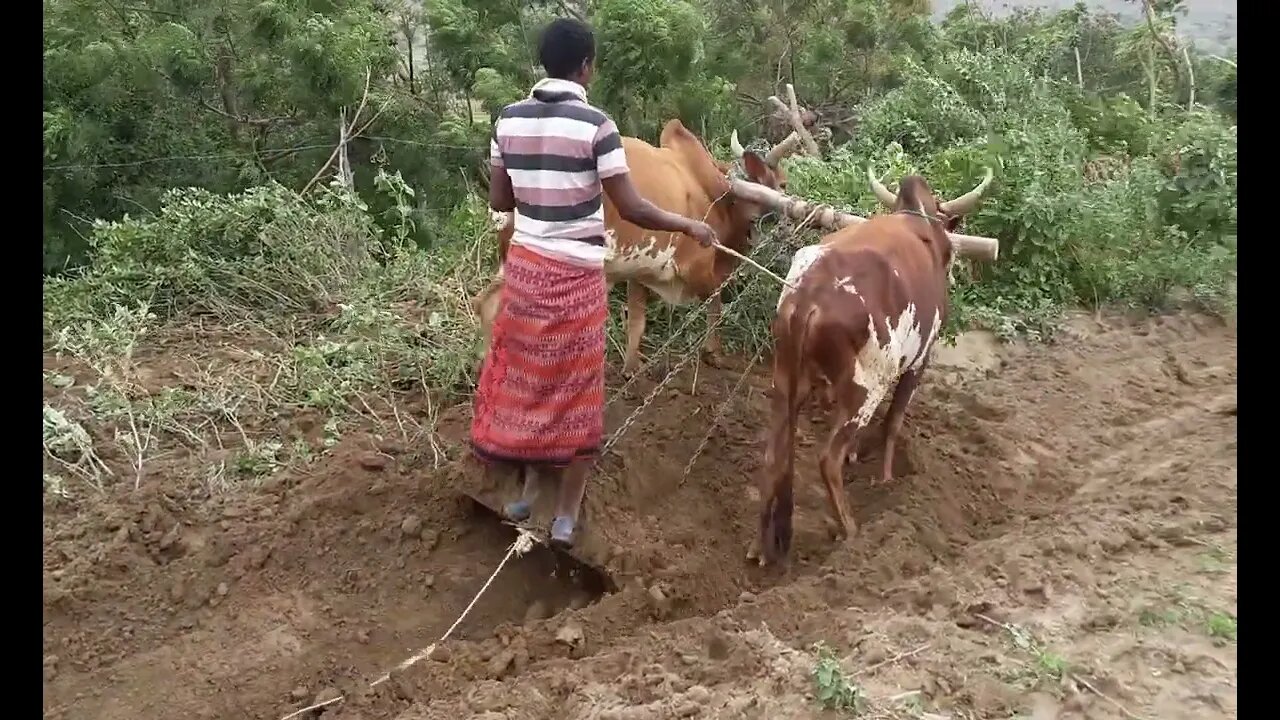Premium Only Content

#spate #oxen #excavation Traditional Oxen-Driven Canal Excavation for Spate Irrigation
In some areas of Ethiopia access to oxen is considered to be a more important production resource than land. The reasons for oxen's strong position there are related to the predominance of cereal cultivation, dry climate and heavy soils. In parts of Ethiopia there are more oxen than cows. Households with a pair of oxen are in general the richest households and those without oxen have to pay up to 50% of the harvest to have their land ploughed. Alternatives to ox ploughing, such as cow traction, hoe tillage or zero tillage, may develop in the future.
Spate irrigation is found in the Middle East, North Africa, West Asia, East Africa and parts of Latin America. In some countries it has a long history - more than 5000 years in Yemen, Pakistan and Iran. In the Horn of Africa spate irrigation is more recent with Eritrea and Sudan having the longest
experience and although it is officially recorded as being practised over the last 200 years, it is highly likely that it has been practised on much
longer. Particularly in Ethiopia and Eritrea spate irrigation is on the increase.
Farmers use ox to help them in ploughing fields. They keep plough on shoulders of oxen. Oxen pull them all over the fields. It makes the soil loose. After ploughing, soil is ready for sowing.
-
 1:17:37
1:17:37
Game On!
3 hours ago $1.21 earned5 SHOCKING Super Bowl Stats and Trends!
25.5K2 -
![[Ep 601] USAID / CIA | Panama | Guest Sam Anthony of [your]NEWS](https://1a-1791.com/video/fwe2/b0/s8/1/E/U/D/u/EUDux.0kob-small-Ep-601-USAID-CIA-Panama-Gue.jpg) 2:01:29
2:01:29
The Nunn Report - w/ Dan Nunn
3 days ago[Ep 601] USAID / CIA | Panama | Guest Sam Anthony of [your]NEWS
21K11 -
 58:57
58:57
The Dan Bongino Show
6 hours agoDOGE Uncovers More Corruption Than We Ever Thought Possible (Ep. 2418) - 02/07/2025
773K1.59K -
 47:52
47:52
The Rubin Report
4 hours agoCalifornia Businessman Makes Joe Rogan Go Quiet with Never-Before-Told Details of LA Fires
90.5K32 -
 2:05:11
2:05:11
Benny Johnson
4 hours ago🚨INSURRECTION: Violent Democrats Storm DC Federal Buildings! Vow to Impeach Trump | 100K Feds Resign
141K330 -
 1:06:22
1:06:22
The Big Mig™
19 hours agoGlobal Finance Forum From Bullion to Borders
13.4K8 -
 1:34:04
1:34:04
Film Threat
16 hours agoLOVE HURTS + HEART EYES + LOADS OF REVIEWS | Film Threat Livecast
14.9K -
 44:41
44:41
Tudor Dixon
3 hours agoThe MAHA Movement with Zachary Levi | The Tudor Dixon Podcast
18.5K -
 1:23:18
1:23:18
Caleb Hammer
3 hours agoPathetic Sugar-Baby Is Mad I Won’t Date Her | Financial Audit
21.5K2 -
 DVR
DVR
Bannons War Room
1 year agoWarRoom Live
112M